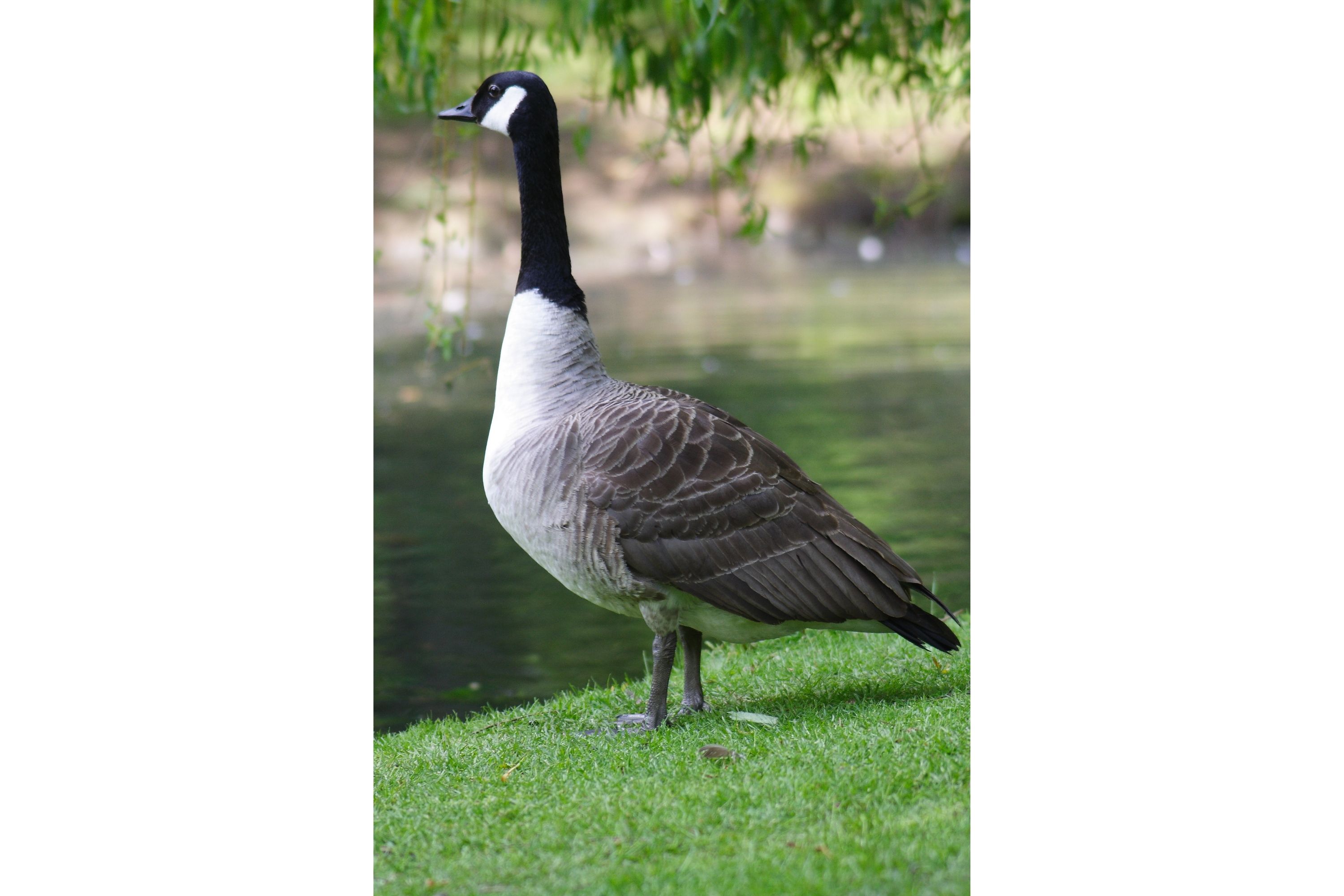Canada goose
(Branta canadensis)

Description
Branta canadensis, also known as the Canada Goose, is a large waterbird native to North America. It is a member of the family Anatidae, which includes ducks, swans, and other geese. The Canada Goose is a popular and iconic species that has captured the imagination of people around the world, and its distinctive honking call is a familiar sound in many parts of the world. In this article, we will explore the physical characteristics, behavior, habitat, diet, and conservation status of the Canada Goose. Physical Characteristics The Canada Goose is a large bird that can grow up to 43 inches (110 cm) in length and have a wingspan of up to 73 inches (185 cm). They weigh anywhere from 5 to 14 pounds (2.3 to 6.4 kg), with males generally being larger than females. Their bodies are covered in grayish-brown feathers, and their heads and necks are black with a white chinstrap that runs from ear to ear. Their beaks are black and their legs and feet are a bright orange. Behavior Canada Geese are social birds that form strong pair bonds with their mates. They are monogamous and will typically mate for life. During the breeding season, pairs will defend their nesting territory aggressively against other geese and animals that may threaten their young. The males will often stand guard while the females incubate the eggs, and both parents will care for and protect the goslings once they hatch. Canada Geese are also known for their distinctive honking call, which is used to communicate with each other and establish their territory. They are migratory birds that travel in large flocks and can cover great distances during their annual migrations. These migrations are typically undertaken in a V-formation, which allows the birds to conserve energy by taking turns leading the flock. Habitat Canada Geese are found throughout North America, from the Arctic tundra to the southern United States. They are adaptable birds that can thrive in a variety of habitats, including wetlands, grasslands, agricultural fields, and urban areas. They are commonly found near bodies of water, such as lakes, ponds, and rivers, where they feed on aquatic plants and insects. Diet The Canada Goose is an herbivore that primarily feeds on grasses, sedges, and other plants. They will also feed on aquatic plants, such as duckweed and algae, as well as insects and small invertebrates. During the winter months, when food is scarce, Canada Geese will also feed on agricultural crops, such as corn and wheat. Conservation Status The Canada Goose is a species of least concern according to the International Union for Conservation of Nature (IUCN). The population of Canada Geese has increased significantly over the past century due to conservation efforts and the expansion of their range into urban areas. However, in some areas, the overpopulation of Canada Geese has become a problem, as they can cause damage to crops, lawns, and golf courses, and their droppings can pose a health risk. In conclusion, the Canada Goose is a fascinating and iconic bird that is beloved by many. With its distinctive honking call, adaptable nature, and strong pair bonds, the Canada Goose has captured the imaginations of people around the world. While the overpopulation of Canada Geese can be a problem in some areas, overall, this species is thriving and continues to be a cherished part of the natural world.
Taxonomic tree:







